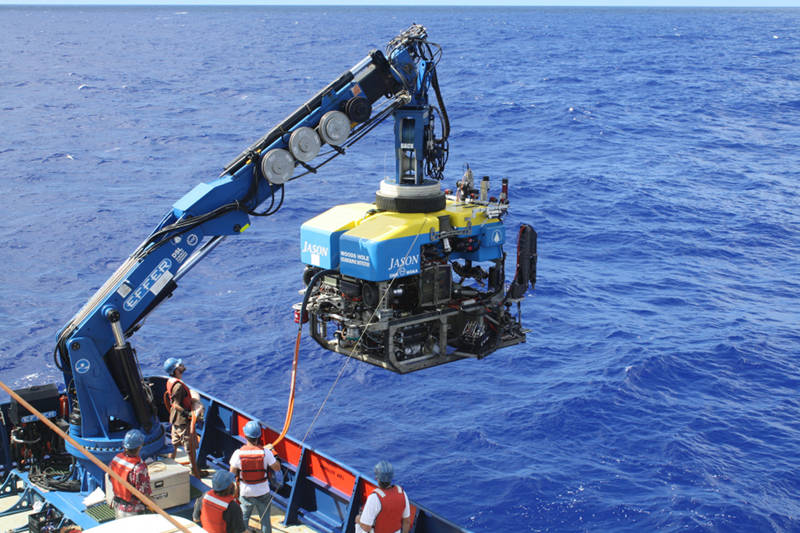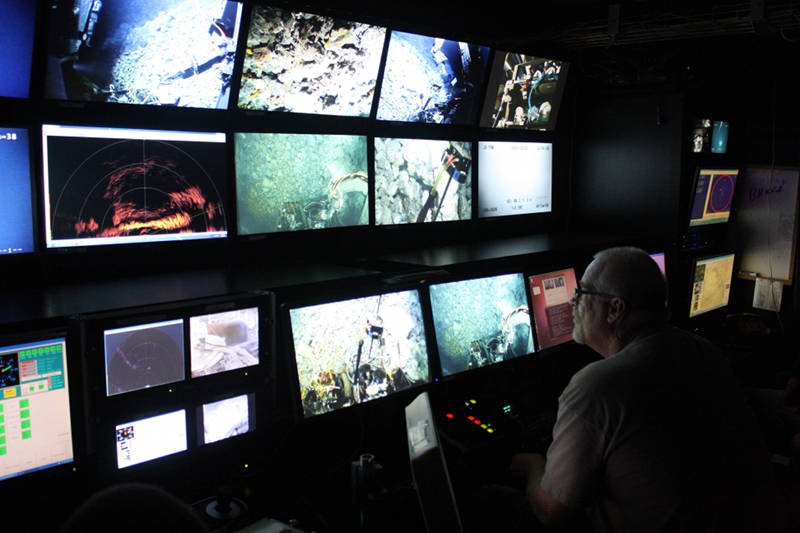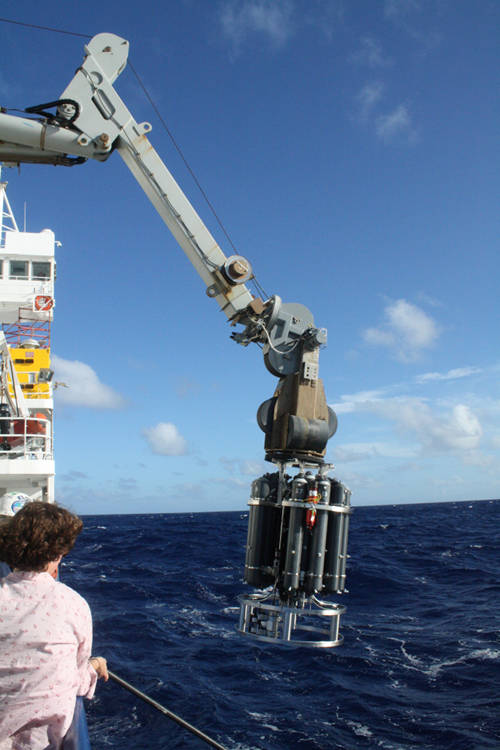
By Bill Chadwick - Oregon State University and NOAA Pacific Marine Environmental Laboratory
Craig Moyer - Western Washington University
December 22, 2014
Cruise Summary. December 21, 2014, Back to Port. Video courtesy of Video courtesy of Submarine Ring of Fire 2014 - Ironman, NSF/NOAA. Video produced by Saskia Madlener. Music by Charlie Brooks. Download (mp4, 28.3 MB)
This cruise has been challenging in many ways, mainly due to the weather and the many problems associated with a faulty cable provided for us to use with Jason. The outcome was that we did not get nearly as many remotely operated vehicle (ROV) dives to the seafloor as we had hoped.

The R/V Revelle in port in Guam. Image courtesy of Submarine Ring of Fire 2014 - Ironman, NOAA/PMEL, NSF. Download larger version (jpg, 2.8 MB).
On the other hand, the dives we did get were very productive and gave us the opportunity to make observations, collect samples, and conduct many of the experiments that we had set out to accomplish. We were also able to collect other useful data between Jason dives, including CTD casts and tows to search for hydrothermal and eruptive plumes and multibeam sonar data to map new areas and to look for depth changes at seamounts that had already been surveyed.
The highlights of the cruise include:

The Jason ROV being deployed. Image courtesy of Submarine Ring of Fire 2014 - Ironman, NOAA/PMEL, NSF. Download larger version (jpg, 3.6 MB).

The Jason control room during a dive. Image courtesy of Submarine Ring of Fire 2014 - Ironman, NOAA/PMEL, NSF. Download larger version (jpg, 2.7 MB).

The CTD being deployed over the side. Image courtesy of Submarine Ring of Fire 2014 - Ironman, NOAA/PMEL, NSF. Download larger version (jpg, 2.8 MB).
We greatly appreciate the support we received from the Jason team and the captain and crew of the R/V Revelle. They went above and beyond in their efforts to support our science goals and to help us achieve as much as we could during this expedition. We also thank all the members of the science party who worked at all hours to get the most out of every opportunity we had. In addition, we gratefully acknowledge the agencies that provided the funding for this expedition: the National Science Foundation, the NOAA Office of Ocean Exploration and Research, and NOAA’s Pacific Marine Environmental Laboratory.
The Mariana area is such a fascinating place, we’re already looking forward to our next opportunity to work here – but next time we’re hoping for better luck with the weather!